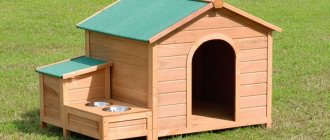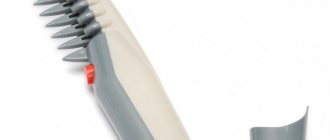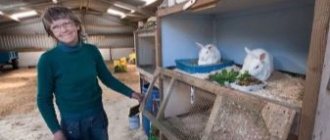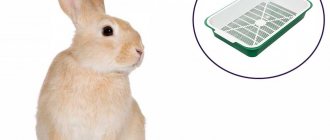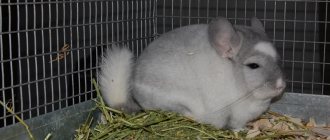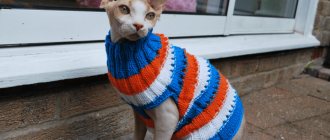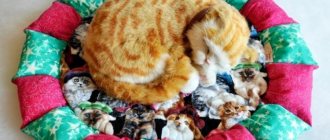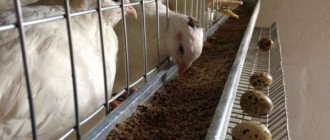The house finally has a pet bird - a parrot! Often, at the same time as purchasing a bird, you also purchase a house for the bird, but what to do if you have purchased a large parrot that still needs a large cage-aviary?
If you really want, you can make such a house yourself at home.
What types of cells are there?
There is a wide range of these devices on the market, which is sometimes very difficult for an amateur poultry farmer to navigate. For experienced breeders, this problem is easier to solve, since they often make housing for their feathered pets themselves at home.
Cage modifications for parrots vary depending on:
- type of manufacture (factory cage or homemade bird house);
- shapes (round, rectangular, square);
- roof type (flat, domed, pagoda-shaped);
- manufacturing materials (wooden, metal, with copper and galvanized rods, plastic, combined);
- type of door (to the side, bottom up or top down);
- size (large, medium, small, enclosures);
- breed and size of parrots.
| Optimal sizes and shapes | ||||
| Types of parrots | House for transportation | Temporary housing for quarantine | Housing for permanent residence (per adult bird) | Aviaries |
| Small (lovebirds, wavy) | 0.3x0.2x0.25m | 0.4x0.2x0.3m | 0.4x0.25x0.3m (0.6x0.3x0.4m) | 1x0.4x0.6m |
| Medium size | ||||
| Kalita, cockatiel | 0.4x0.25x0.39m | 0.7x0.5x0.6m | 0.5x0.4x0.6m (0.8x0.4x0.7m) | 2x0.70x1.5m |
| Loris, ringed | 0.4x0.3x0.3m | 0.7x0.6x0.7m | 0.8x0.5x0.5m (1x0.5x0.7m) | 2x0.7x1.5m |
| Cockatoo | 0.5x0.3x0.3m | 0.7x0.6x0.6m | 0.7x0.6x0.6m | 2x0.7x1.5m |
| Large breeds (macaws, grays, amazons) | 0.8x0.5x0.5m | 0.8x0.7x0.7m | 1×0.8×0.8m | 1x1x1.5m |
According to experienced breeders, the ideal cage for a parrot is a high-quality metal structure of a rectangular shape with a flat top, which matches the size of the bird and is safe for its health.
It is worth remembering that a feathered pet first of all needs comfort, and not the beautiful shape of its house. For example, a round-shaped cage for a cockatiel parrot looks good, but the bird often loses its orientation in it and does not feel protected. A house with a curved roof can cause injury to birds and is difficult to clean. And in a house with limited space, a feathered pet is at risk of muscular dystrophy, apathy or aggressiveness.
Accommodation
This nuance greatly affects the health, psycho-emotional mood and singing of your ward. In most cases, the question of setting up a cage is limited to a well-lit window sill. But ornithologists categorically advise against doing this.
Firstly, the ban is associated with a sharp temperature difference from a cold window glass and a warm room, which often causes various diseases in birds.
Secondly, window cracks create drafts. Thirdly, poor visibility of the color of the house singer.
According to experts, the ideal place for a canary cage is:
- light wall opposite the window;
- a place away from noisy objects, including a TV and tape recorder;
- at human eye level or slightly higher;
- where there is no constant movement of household members;
- not in direct sunlight;
- not in a draft;
- in a living room where the air temperature is between 16 and 22 degrees Celsius.
Domesticated birds also include the Amadin bird.
It is important to choose a permanent location for the bird house. It cannot be moved endlessly, since each such attempt ends in stress for the bird. In a closed room, he can and should be let out for a walk. Initially it lasts about 10 minutes, and then within an hour.
If you take these recommendations into account when choosing or constructing a homemade cage for canaries, then your bird will delight you with its amazing trills for more than 10 years.
What kind of cage should a large parrot have?
Large parrots include species whose weight exceeds 3 kg (for example, macaws, African grays, Amazons).
When choosing housing for such large pets, consider the following points:
- The length of the tail (the tail should not touch the walls of the cage when turning).
- Diameter of poles (1-1.5 cm).
- Dimensions of the house (from 1.3x1x0.7 m).
- The thickness of the cage bars (0.3-0.5 cm).
- The presence of pallets (will facilitate the cleaning process).
- Arranging a bathhouse for bathing.
- The presence of a door with a reliable two-turn lock that opens to the side, the size of a bird.
The best cages for feathered pets are presented by “Triol”, “Ferplast”, “Pen-plax”, “Inter-zoo”, “Imac”. The designs of these companies undergo certification and pre-sale quality checks.
Aviary for a large parrot
Common cell types:
- lattice with a body made of solid metal (a structure made of a metal mesh or lattice, welded or twisted together);
- lattice combined;
- solid metal cages;
- cellular combined;
- wooden;
- plastic;
- combinations with galvanized or copper rods.
Experts advise choosing combined houses, which you can easily purchase at any pet store or make yourself.
Is an aviary required?
A parrot aviary is an excellent solution for keeping a large bird or several regular-sized birds. Pets are able to fully enjoy freedom. In addition, many breeds can only reproduce in such conditions. Also, in the warm season, you can put your home on the balcony, where in the open air the parrots’ immunity is significantly strengthened and molting goes better.
Among the disadvantages is the area occupied by the enclosure. In addition, if you keep several birds in it at once, then if one of them gets sick, it may be difficult to isolate it and prevent an epidemic. Parrots living in a group are less trainable.
Features of building an aviary
When building an aviary for parrots, it is worth remembering the following features.
This:
- For ease of cleaning, you should try to make the structure collapsible. If this doesn’t work, then you need to make several doors and a fully retractable tray. It can be filled with wood cat litter, which perfectly collects dust and absorbs moisture.
- You need to place the enclosure in a bright corner of the room or place a source of artificial light nearby.
- For shy parrots, it is worth making at least two walls of the home solid.
- Rope ladders and large tree branches can be used as decoration.
Material suitable for making a cage
The material from which the bird house is made must be safe, durable and of high quality.
| Type of material used | Advantages | Flaws |
| Tree | Environmental friendliness, safety. | Absorbs moisture, which causes pathogenic flora to develop. |
| Metal (combination of metal and plastic) | The most practical and durable choice, provided that you choose a safe product from a trusted manufacturer. | If coated with paint or other chemicals, it may cause poisoning to the parrot. |
| With copper and galvanized rods | Durable, inexpensive. | When oxidized, a number of toxins are released, which can cause death in parrots. |
How to make a parrot cage
Varieties
Pet stores offer a huge number of toys made from various materials and designed for wavy animals. They can be used inside or outside the cage and have different functions.
Some things are needed to sharpen the beak and nails, while others develop intelligence. There must be toys designed for the full physical development of the pet.
Before purchasing a finished product, it is important to make sure that there are no glue residues or small objects on the surfaces that the parrot could tear off and swallow.
For sharpening the beak
The beak of the wavy is covered on top with a horny layer, which is easily ground off.
To do this, the parrot must have constant access to special objects that are used to sharpen its beak. You can use special toys made of wood or plastic.
The basic rule to follow is the safety of the material used. Typically, such toys are represented by a dummy bird, wooden sticks attached to the wall of the cage, as well as perches with unusual protrusions.
Intelligent
Their purpose is to develop the mental abilities of the bird. They are represented by special educational puzzles, upon solving which the bird gains access to some kind of delicacy.
Usually labyrinths or special balls are used for these purposes, which are closed on several sides, but have recesses into which the wavy can insert its beak. With regular use of such toys, the pet becomes more intelligent, and this often has a positive effect on the speed of speech learning.
Do you buy toys for your parrot?
Not really
For physical development
Since pet parrots don't move much, they require special items to help them maintain optimal physical condition. For this purpose, special rings, perches, bungees and ladders are used.
But it is not recommended to overdo it with these elements, since otherwise the parrot simply will not have room for quiet rest and relaxation. You need to place purchased or made elements at different heights.
Interactive
They consist in the fact that the bird must perform certain actions in order to receive a certain delicacy. Sometimes such toys produce sounds when pressed, which arouses the parrot's interest.
Some birds do not understand what needs to be done with an interactive toy, so the human task is to show the principle of operation of the item.
How to make a parrot cage with your own hands
Making a parrot cage yourself is an ideal solution for both the bird and its owner. In the process of work, you can not only build a structure that provides the most comfortable conditions for your feathered friend, but also implement all your design wishes and choose exactly the option that will fit well into the overall ambience of the house.
All the future poultry farmer needs is to acquire the necessary material and tools that will be required in the process of work.
Required tools and material
| Materials | Tools |
| • Metal mesh (cells 2x2 cm) • Wooden slats - 1.5-3 cm • Sheet of plywood (or fiberboard) up to 0.5 cm thick • Nails • Self-tapping screws • Hinges • Drills • Metal corners | • Jigsaw • Hacksaw • Drill • Screwdriver • Hammer • Metal scissors • Sandpaper • Screwdrivers of different sizes • Ruler • Tape measure • Glue |
Manufacturing instructions
Work algorithm
- Preparation of drawings of the future design with a detailed description of the dimensions.
- Assembling the necessary materials and tools.
- Sawing wooden elements according to drawings, polishing them.
- Cutting the mesh in accordance with the instructions, processing its edges with an emery sheet.
- Assembly of the structure:
- Connecting the parts of four walls separately (twisting the slats using self-tapping screws, attaching the mesh);
- Connecting all walls into one structure;
- Mounting the door on one side using hinges.
- Attaching a double bottom to the base (mesh + fiberboard).
- Installation of a fiberboard roof.
- Painting the cage with paint or varnishing (optional).
Homemade parrot cage
Arrangement of the cage
The list of necessary equipment for a feathered pet that is placed in a cage includes:
- Poles;
- Nest with litter (if breeding is planned);
- Sleeping house;
- Sippy cup;
- Feeders;
- Bath for bathing;
- Container with river sand;
- Source of additional light (lamp, lantern) in case of insufficient sunlight;
- Toys for the parrot (ladders, swings, garlands, rings, treats, balls, bells).
Perches and swings
We don't always think about the comfort for the paws of our feathered friends. But parrots use them 24 hours a day, even when they sleep. It is best if the cage can accommodate several perches of different sizes. Natural wooden branch perches for parrots are preferable to plastic ones, because... have natural roughness. Plastic perches are too smooth and uncomfortable for the bird. In this case, the accessory can be additionally sanded to give it an uneven surface. Sisal ropes are comfortable for the bird, but you need to keep an eye on the surface so that they do not become too loose so that the parrot can hang on. You should also choose a swing from affordable and high-quality materials: a round fabric ring with a perch for a parrot.
You can equip the cage with natural wood
Many owners prefer swings made of stainless steel, rubber and rings with impact-resistant plastic. If you choose rubberized products, you should make sure that the parrot does not bite or swallow pieces; If you still notice a bad habit, it is better to remove this accessory from the cage.
Suitable location for the cage
After purchasing or making your own parrot house, you need to place it in the “right” place.
Optimal accommodation conditions:
- Getting enough sunlight (2-3 hours a day) or installing an additional ultraviolet source.
- No drafts.
- The presence of a “quiet zone” (one side of the house is adjacent to the wall to ensure safety).
- On a hill for a bird’s broad horizons (1-1.5 m from the floor).
Perches and swings
As mentioned above, you can make wooden perches yourself
But to figure out how to set up a cage for a budgie, it is very important to know what raw materials are suitable. In general, any wood can be used, except for a few varieties:
- containing toxic substances (acacia, poplar, lilac);
- which contain tannins (cherry, oak, pear);
- conifers containing resin.
You can simply use a branch that is not too thick (about 1.5–2 centimeters in diameter) - this is the easiest way. Before installing the wood in the cage, it must be doused with boiling water and wiped dry.
It is fashionable to equip the cage with natural wood
We don't always think about the comfort for the paws of our feathered friends. But parrots use them 24 hours a day, even when they sleep. It is best if the cage can accommodate several perches of different sizes. Natural wooden branch perches for parrots are preferable to plastic ones, because... have natural roughness.
Plastic perches are too smooth and uncomfortable for the bird. In this case, the accessory can be additionally sanded to give it an uneven surface. Sisal ropes are comfortable for the bird, but you need to keep an eye on the surface so that they do not become too loose so that the parrot can hang on. You should also choose a swing from affordable and high-quality materials: a round fabric ring with a perch for a parrot.
Many owners prefer swings made of stainless steel, rubber and rings with impact-resistant plastic. If you choose rubberized products, you should make sure that the parrot does not bite or swallow pieces; If you still notice a bad habit, it is better to remove this accessory from the cage.
Required Tools
- Metal grid.
- Wooden board or piece of door.
- Hammer.
- A drill or screwdriver will help make the necessary holes in the bottom.
- Scissors for working with metal.
